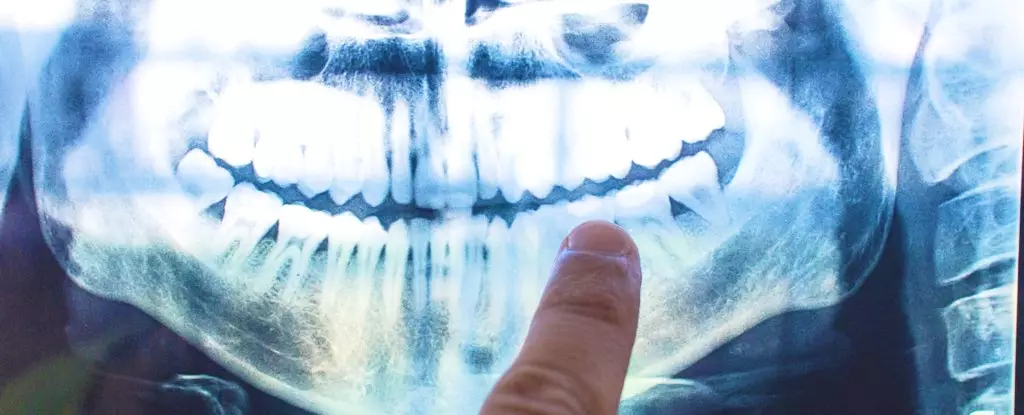In recent years, there has been a growing body of scientific research suggesting a startling hypothesis: Alzheimer’s disease, a devastating neurodegenerative disorder, could potentially be linked to an infection. While the exact mechanisms of this potential infection are still being studied, numerous studies have indicated that the spread of Alzheimer’s may go beyond what was previously believed. One study, led by Jan Potempa, a microbiologist from the University of Louisville, uncovered a connection between the pathogen Porphyromonas gingivalis (the bacteria responsible for chronic periodontitis or gum disease) and Alzheimer’s. This discovery has sparked significant interest and raised questions about the role of oral health in the development of Alzheimer’s.
Gum Disease and Alzheimer’s: A Link?
The team of researchers, working in collaboration with pharma startup Cortexyme, conducted experiments with mice, which demonstrated that oral infection with P. gingivalis resulted in the colonization of the brain by the bacteria. Furthermore, this colonization was accompanied by an increased production of amyloid beta (Aβ), the sticky protein associated with Alzheimer’s. While the researchers did not claim to have definitive evidence of causation, they believed that this connection warranted further investigation.
Identifying Gingipains and Their Role
Apart from identifying the presence of P. gingivalis in the brains of Alzheimer’s patients, the research team discovered the presence of toxic enzymes known as gingipains secreted by the bacteria. These gingipains were correlated with two markers of the disease: the tau protein and ubiquitin. However, the researchers made an even more intriguing observation. They found these toxic enzymes in the brains of individuals who had not been diagnosed with Alzheimer’s. This finding raises important questions about the causative relationship between gum disease and Alzheimer’s. It suggests that gingipains may be present in individuals who may have developed the condition if they had lived longer, indicating that brain infection with P. gingivalis could be an early event that explains the pathology observed in middle-aged individuals before cognitive decline.
A Potential Breakthrough: COR388
In addition to their findings, the researchers also tested a compound called COR388, formulated by Cortexyme, which showed promising results in reducing bacterial load in an established P. gingivalis brain infection. The compound also demonstrated the ability to reduce amyloid-beta production and neuroinflammation. While these experiments were conducted in mice, they provide a glimmer of hope for potential future treatments.
The Road Ahead
While the link between gum disease and Alzheimer’s is still being explored, the research community is cautiously optimistic. The identification of gingipain antigens in the brains of individuals with Alzheimer’s, as well as those with Alzheimer’s pathology but no diagnosis of dementia, suggests that brain infection with P. gingivalis is not solely a result of poor oral care following the onset of dementia or a consequence of late-stage disease. Instead, it may be an early event that contributes to the pathology seen in middle-aged individuals before cognitive decline. This breakthrough discovery opens up new avenues for research and potential interventions to prevent or slow down the progression of Alzheimer’s.
While the findings from this study are promising, it is important to acknowledge that more research is necessary to fully understand the connection between gum disease and Alzheimer’s. The current evidence builds a compelling case but falls short of establishing a definitive causal relationship. Rigorous studies involving larger populations and diverse cohorts are required to validate these findings and shed more light on this potential link. Additionally, researchers will need to investigate whether treating gum disease can have a preventative or therapeutic effect on Alzheimer’s.
With no new dementia treatments emerging in over 15 years, the significance of exploring various approaches to tackle Alzheimer’s cannot be overstated. While drugs targeting the toxic proteins of bacteria like P. gingivalis have only shown promise in animal models, they provide a glimmer of hope. Further investigations into the potential of these compounds and innovative therapies are crucial in advancing our understanding and improving the lives of those affected by Alzheimer’s.
The discovery of a potential link between gum disease and Alzheimer’s disease represents a significant breakthrough in our understanding of this devastating neurodegenerative disorder. While there is still much to learn, these findings raise important questions about the role of oral health in brain health and open up new possibilities for prevention and treatment. Further research, innovative therapies, and a multi-faceted approach are necessary to unravel the complex nature of Alzheimer’s disease and find effective solutions. Only through continued investigation and collaboration can we hope to make strides towards a future without Alzheimer’s.


Leave a Reply